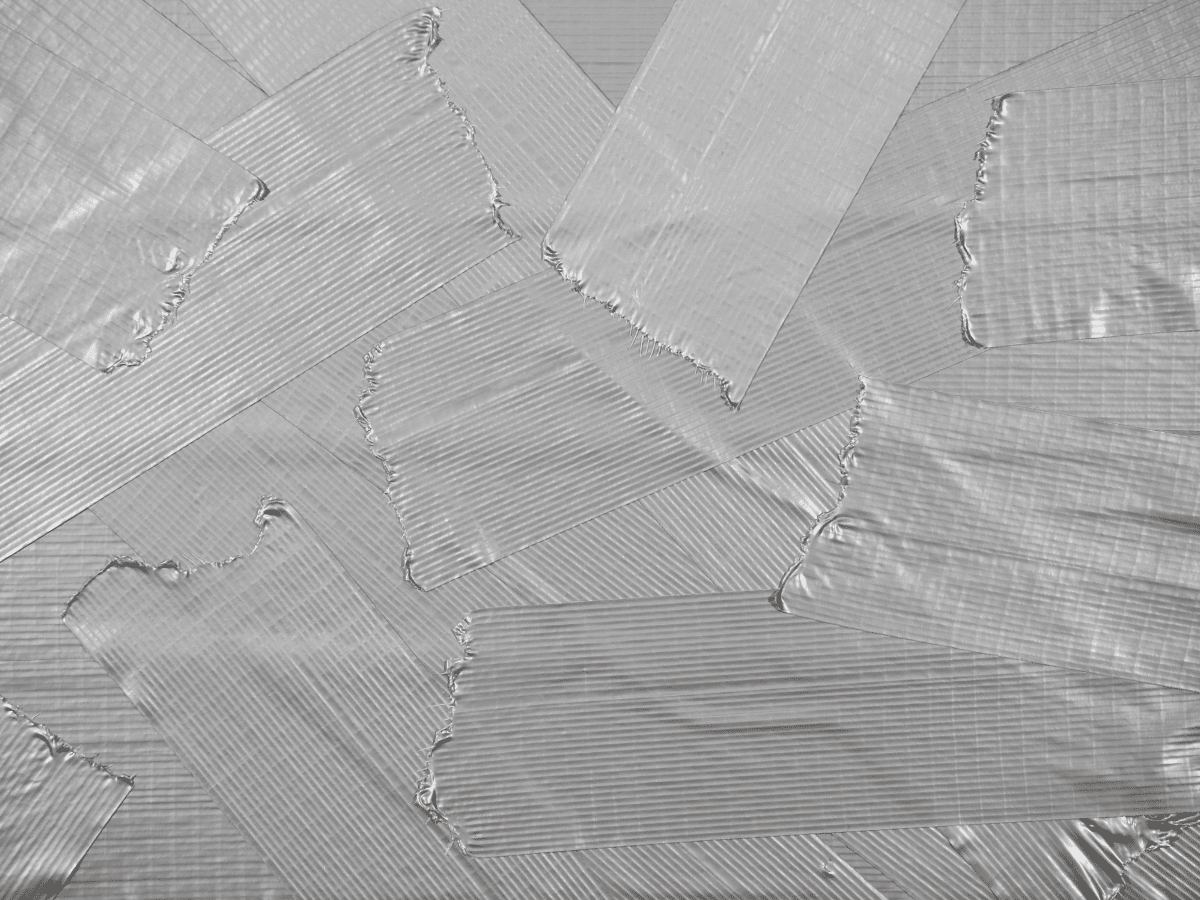
Sticking it to the Axis 2: The Tape that Holds Like Glue
This article is the seventh in our series on the technology and innovations that came about or were first majorly used during World War II. We will cover a number of incredible inventions in future articles. We also invite you to take a look at our previous articles to learn about microwave ovens, M&M’s®, the Jeep®, SPAM®, the Higgins boat, and super glue. And now, we examine another of the stickiest inventions of WWII.
Duct tape is well recognized in the world of adhesives, known for its versatility, strength, and wide range of applications. However, its journey from invention to global ubiquity is an intriguing one, intertwined with innovation, patents, and intellectual property (IP).
Origins and Invention
Duct tape was invented during World War II by a woman named Vesta Stoudt, who worked at the Green River Ordnance Plant in Illinois.[i] At the time, soldiers faced a significant problem: the waterproofing of ammunition boxes.[ii] The standard solutions, lead-based solder, paper tape, and wax, were heavy or ineffective, and it was difficult for soldiers in the field to repair damaged boxes.[iii] Stoudt had the idea to create a strong, waterproof tape that could seal these boxes quickly and efficiently.
She proposed the idea, via a letter to President Roosevelt, to the U.S. military in 1943, which had been searching for a solution to the problem.[iv] The result was a tape that combined a durable, fabric-reinforced backing with a strong adhesive capable of sealing the boxes. It is believed this new tape was initially called “duck tape” (named after the water-resistant nature of the material, like a duck’s feathers).[v] Over time, the tape’s name evolved into “duct tape,” reflecting its later use in heating, ventilation, and air conditioning (HVAC) systems for sealing ducts.[vi]
Commercialization and Growth
Post-war, duct tape entered the commercial market, evolving from a military necessity into an everyday product. The tape became synonymous with quick fixes, home repairs, and an array of creative uses. Originally, the tape was manufactured in green.[vii] However, in the 1950s, the tape began to be manufactured with a silver-colored plastic coating, making it more suitable for sealing ducts, which is how it got its updated name.[viii]
By the 1960s, duct tape had become an essential tool in homes, construction sites, and workshops. The strong adhesive, durability, and adaptability made it the go-to option for emergency repairs, sealing, and even crafting. It was also during this period that the now-iconic silver-colored tape became widely recognized.[ix]
Intellectual Property and Patents
The story of duct tape’s IP is complex. Vesta Stoudt, despite having her design taken into account and being credited with the original idea, never received a patent for her creation. This omission speaks to one issue of patenting during wartime, when the focus was often on immediate utility rather than individual recognition.
The first patents related to the specific formulation of duct tape were granted to the companies that later commercialized the product.[x] Notably, the patents for the adhesive properties and the unique construction of duct tape were held by companies like Johnson & Johnson®, which helped bring it to the consumer market. One such example is U.S. Patent 2,947,710, titled “Pressure sensitive adhesive composition and tape coated therewith.” However, as is common with many mass-produced products, once the patents expired, others entered the market, and duct tape became a generic item, leading to its widespread availability.
The case of duct tape highlights a key issue of IP law: the balance between protecting an inventor’s rights and the public’s access to innovations. In Stoudt’s case, despite her contribution to the invention, many of the early patents for duct tape products were held by large companies. These companies’ patents allowed them to manufacture and profit from the tape, while the knowledge of how to make duct tape spread to the public domain.
Duct Tape Today
Today, duct tape is a staple product in households, workshops, and industries worldwide and it remains a classic example of a successful product born from military necessity. Companies still file patents for variations of duct tape, such as specialty tapes for specific purposes, but duct tape in its most basic form remains largely in the public domain.
How Gallium Law Can Help
Like duct (or “duck”) tape, we will stick with you throughout the process of exploring IP protection. We are here to help you, whether you are unsure you have invented something or have spent years developing a creation and are ready to explore IP options. To get in touch with us, please fill out this online form or call us at 651-256-9480 to schedule a free and confidential consultation.
*The information in this article is not legal advice and should not be relied on. The content of this article is for informational purposes only and is meant as a starting point in your search for answers to your legal questions.
[i] https://www.jnj.com/our-heritage/vesta-stoudt-the-woman-who-invented-duct-tape
[ii] https://www.ppmindustries.com/en/news/long-history-duct-tape
[iii] https://www.jnj.com/our-heritage/vesta-stoudt-the-woman-who-invented-duct-tape
[iv] https://www.ppmindustries.com/en/news/long-history-duct-tape
[v] https://www.groundfloorhomeinspection.com/single-post/2018/08/20/the-history-of-duct-tape
[vi] https://www.ppmindustries.com/en/news/long-history-duct-tape
[vii] https://www.groundfloorhomeinspection.com/single-post/2018/08/20/the-history-of-duct-tape
[viii] https://www.ppmindustries.com/en/news/long-history-duct-tape
[ix] https://www.ppmindustries.com/en/news/long-history-duct-tape
[x] https://patents.google.com/patent/US2947710A/en



